This post may contain affiliate links. If you click and make a purchase, I may earn a small commission at no extra cost to you!
Types of Knives and Their Uses
Whether you aspire to be a professional chef at a Michelin-star restaurant or truly resent the idea that you have to cook at home for yourself every day, kitchen knives are an essential tool for all of us and it is important to have at least a basic understanding of them. There are many different types of knives and it can be overwhelming. Learning the differences between types of knives enables us to equip our kitchens better and choose the right knife while cooking.
Selecting the proper type of knife helps ensure safety, efficiency and quality results while cooking. With the wide range of options available, it can be helpful to understand the main categories of kitchen knives. I hope this comprehensive guide to knives and their uses leaves you feeling a little more empowered in your kitchen.
*Special note – I have linked to my preferred brand of knives, Wüsthof. Below, I will review a few different brands across various price ranges.
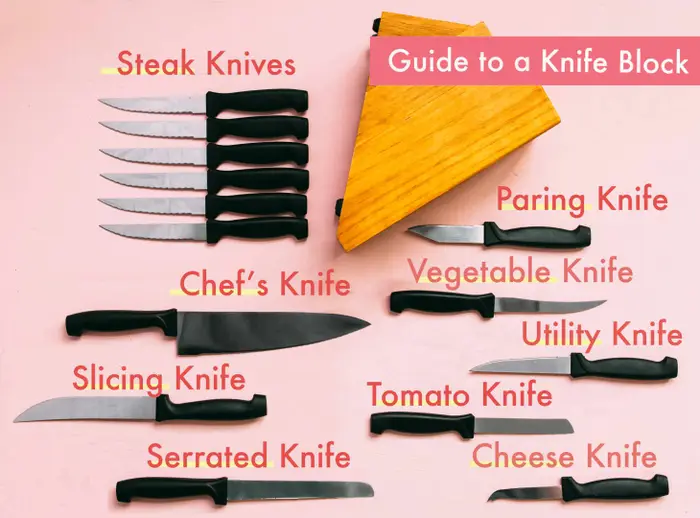
Standard Kitchen Knives and When to Use Them
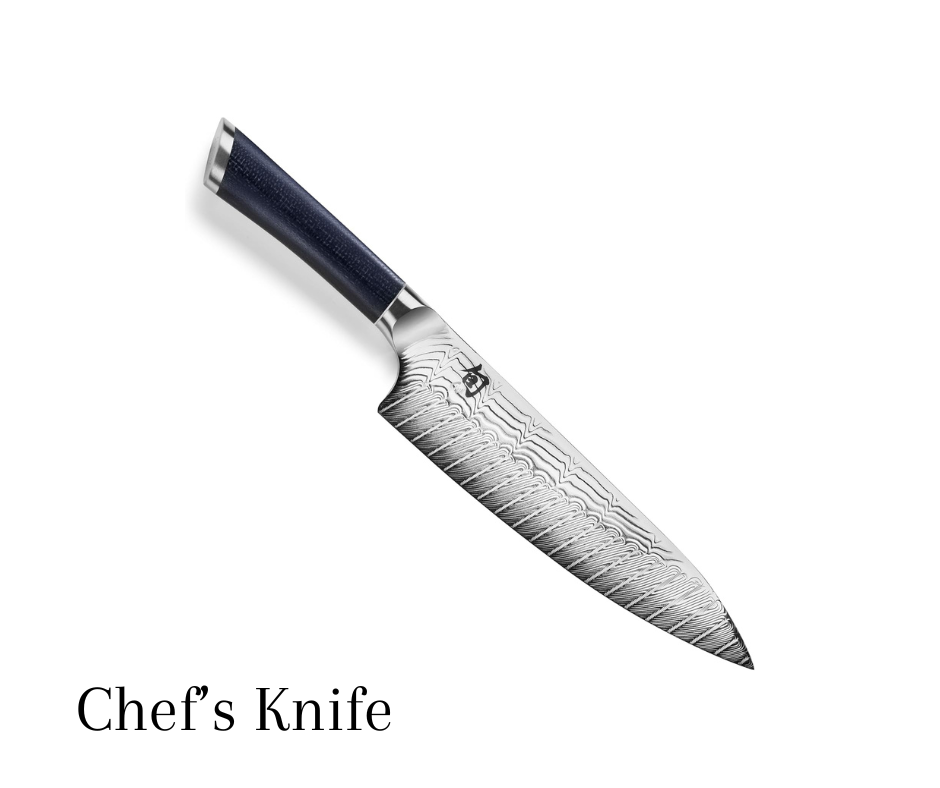
Hollow Edge Santoku Knife – A hollow edge Santoku knife is preferred for its ability to reduce sticking and friction when cutting. The indentations along the blade create air pockets that prevent food from adhering to the knife. This enables a smoother and more efficient slicing and dicing process. This is particularly useful when working with vegetables and fruits. It’s not always a direct replacement of a classic Chef’s knife. Santoku knives excel at tasks such as thin slicing, dicing and mincing, particularly with vegetables and boneless proteins. For tasks requiring a longer blade, a more robust edge, or a rocking motion, a chef’s knife is often preferred
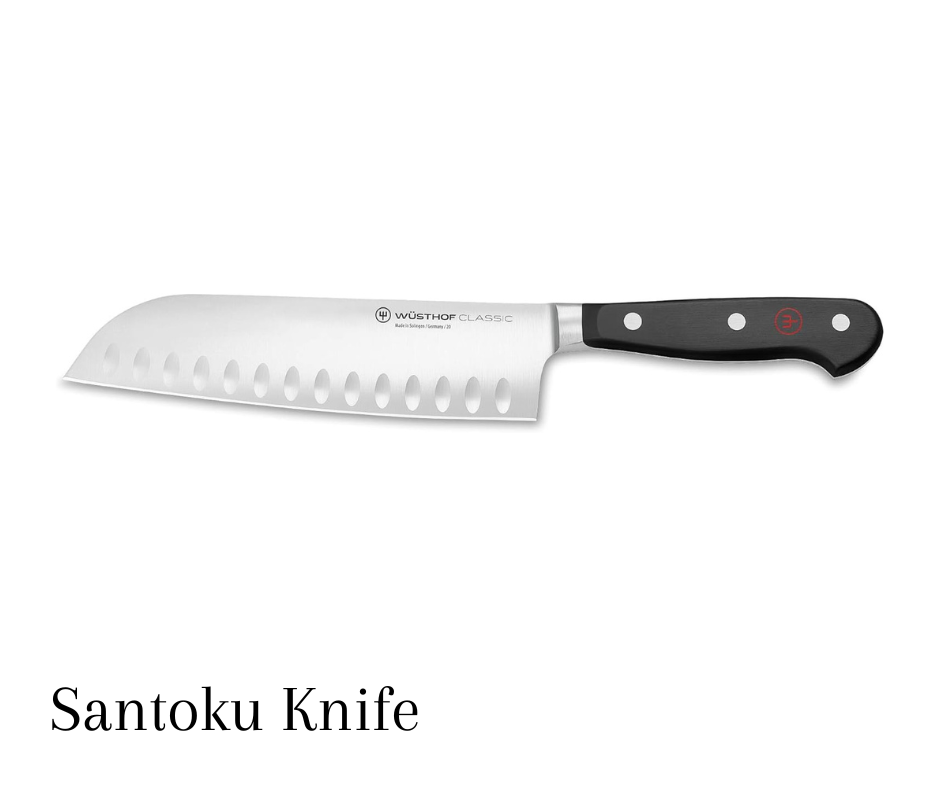
Steak knives – Steak knives are specifically designed for cutting cooked meats. While they’re often associated with steak, their sharp edges make them ideal for a variety of dishes with tougher surfaces like pork chops, chicken, roasts or even larger vegetables.
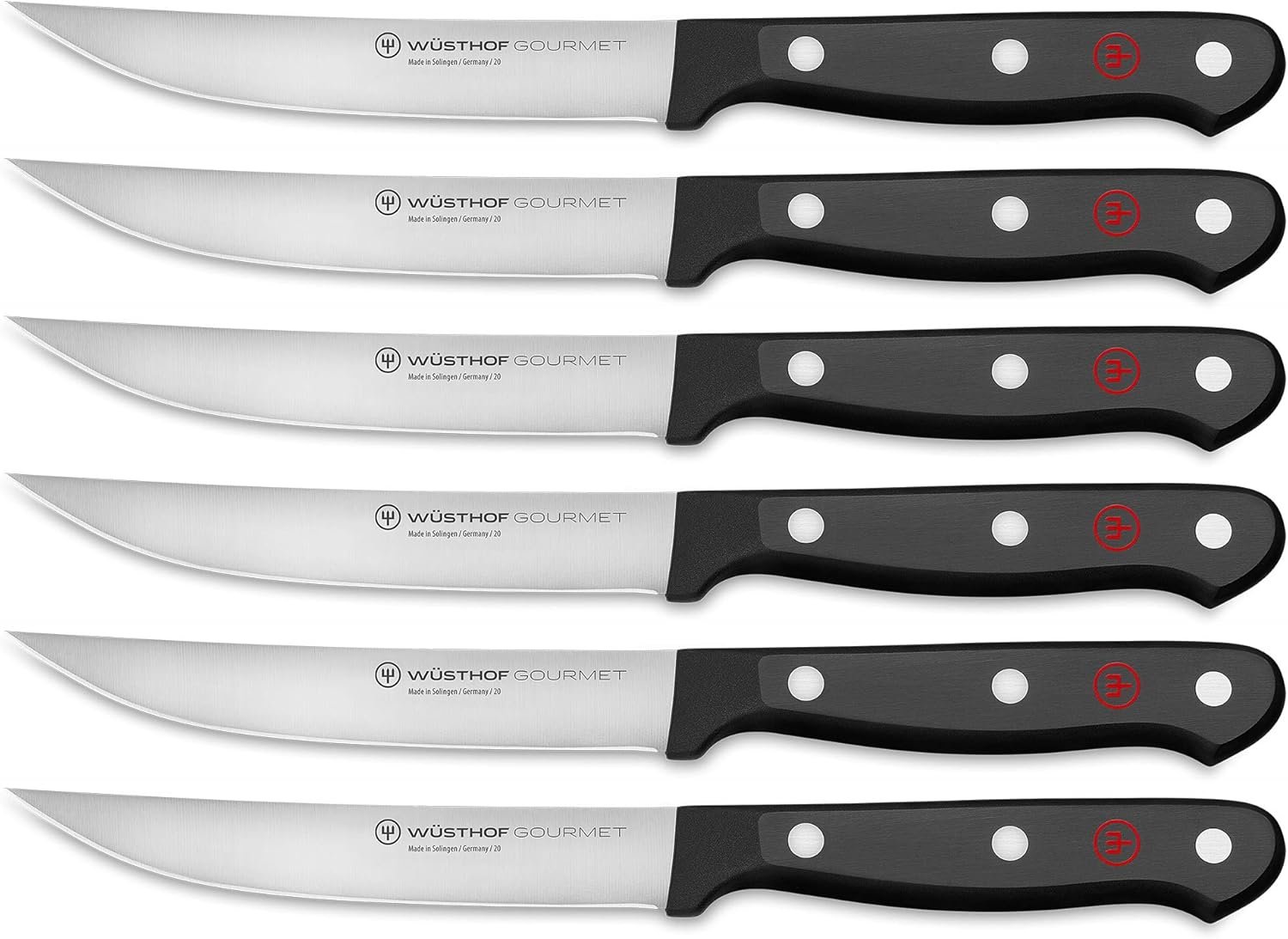
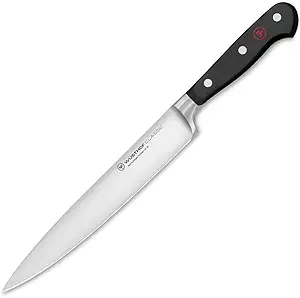
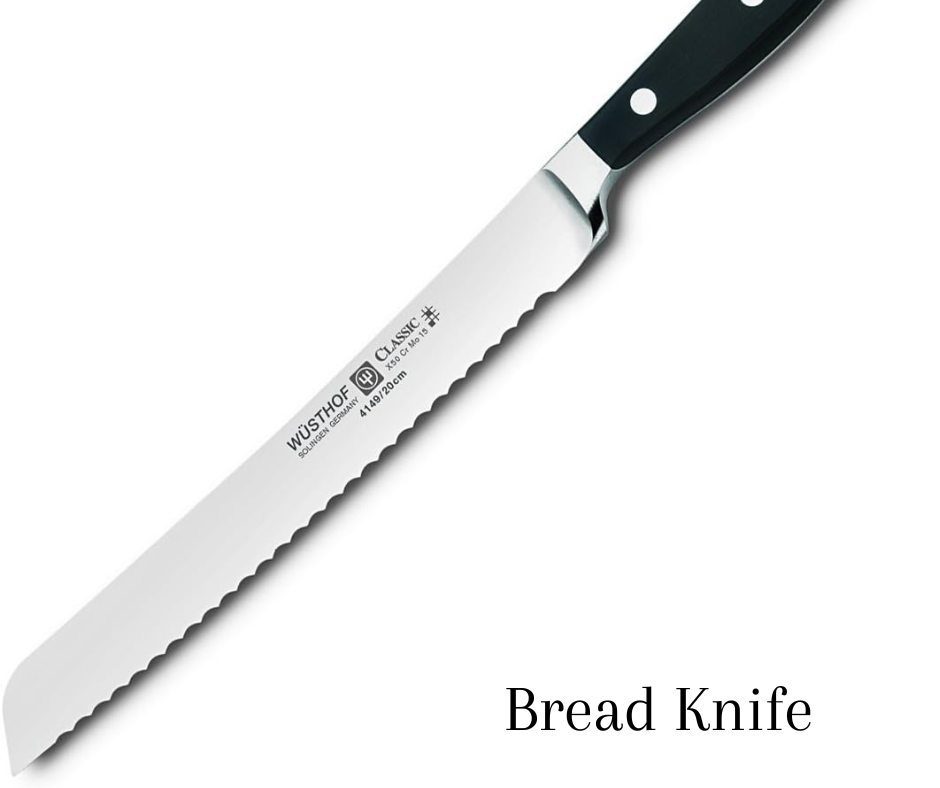
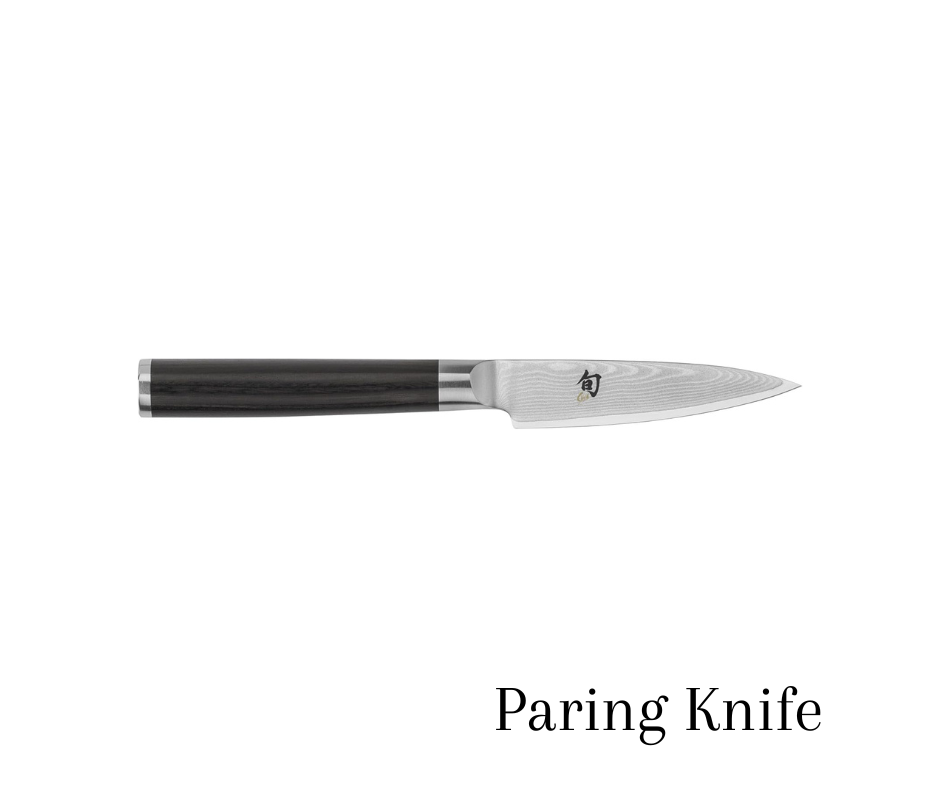
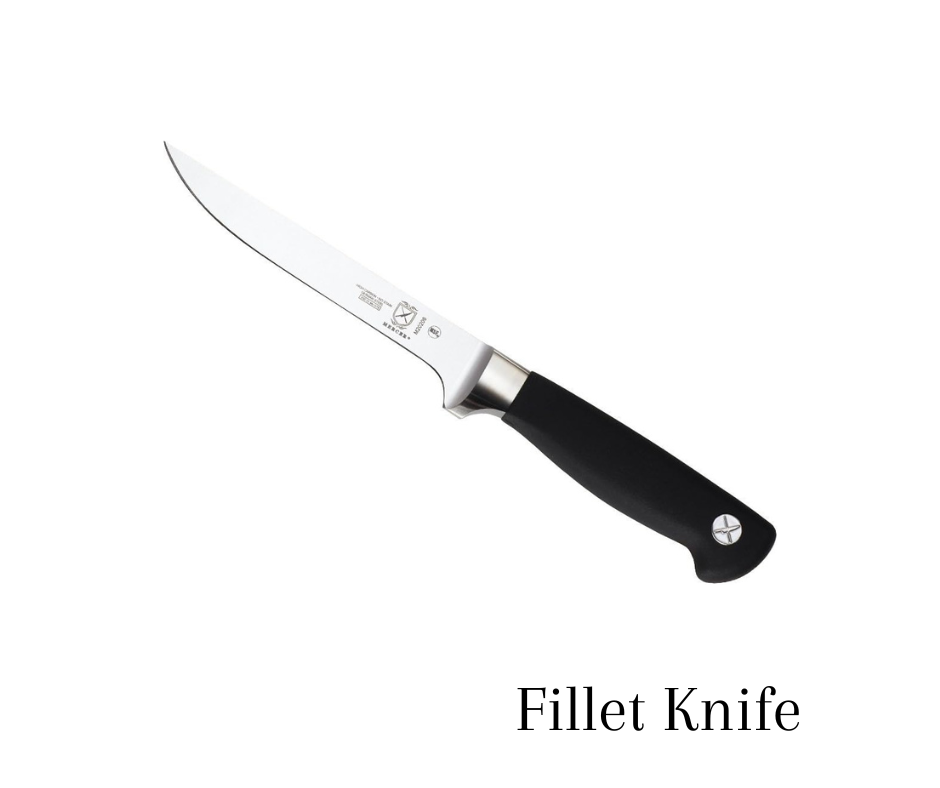
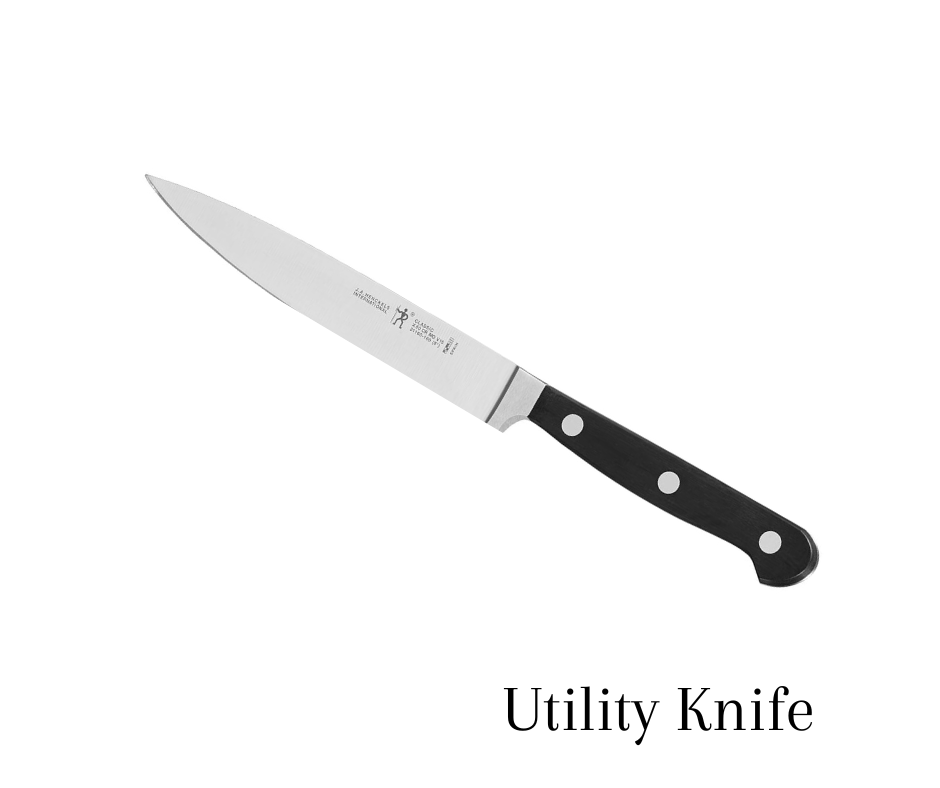
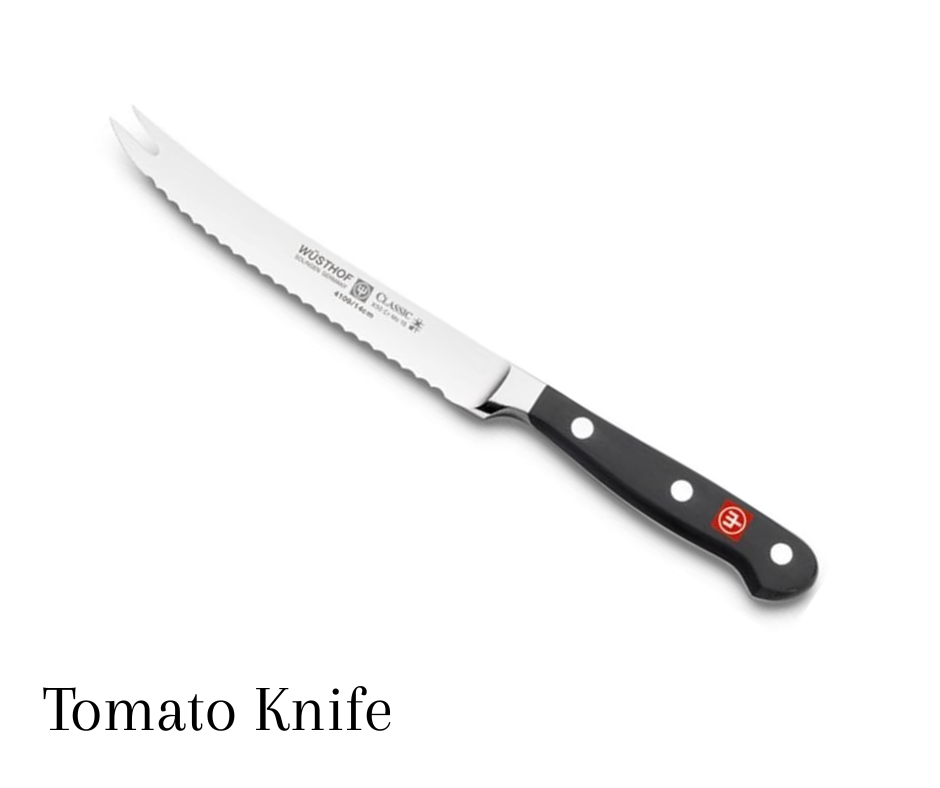
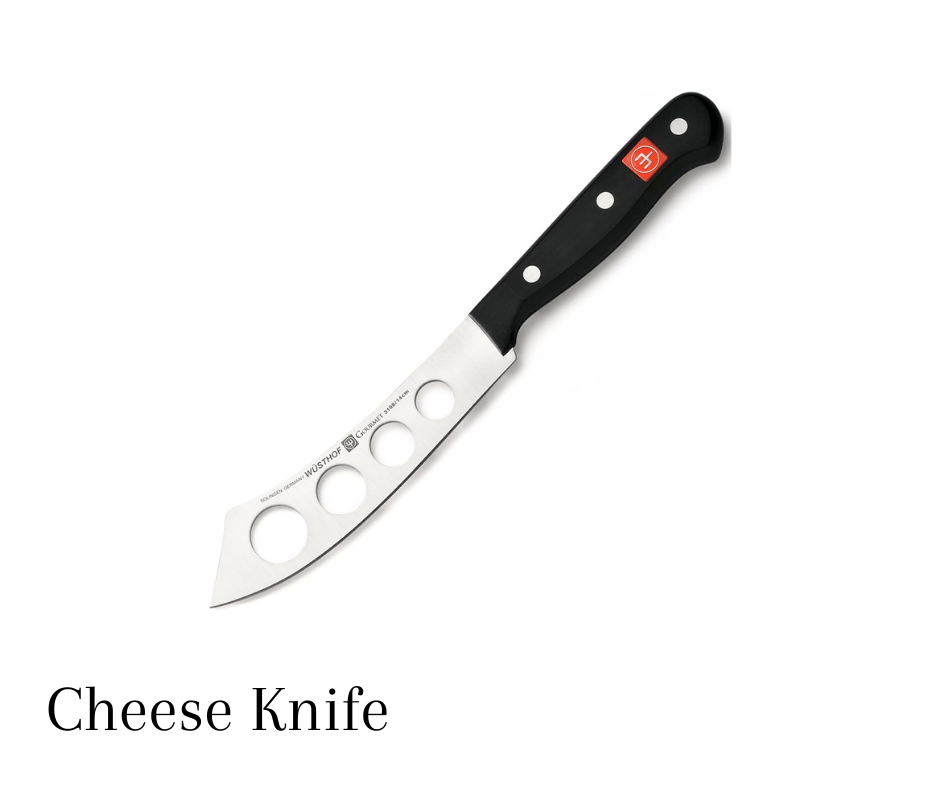
Knife Brands
There are a plethora of knife makers out there. While I have not used them all, I have a couple that I know are great and would recommend.
Wüsthof –German knives are a popular choice for both home cooks and professional chefs due to their high quality and durability. Wüsthof knives exemplify this reputation. Known for their exceptional sharpness, durability, and balanced design, Wüsthof knives are crafted from high-carbon stainless steel. Each knife is forged from a single piece of steel, which provides superior strength and unmatched balance. This fully forged blade contributes to better control and safety for the user, ensuring a reliable performance and longevity.
Shun – Shun truly represents the reputation of Japanese knives for being both razor-sharp and beautifully crafted. They are easily identifiable due to the brand’s blades, which feature wavy ripples visible in the steel. This is created by forging together layers of different compositions. This process produces a dense and tough center of the blade, along with a softer, easy-to-sharpen outer layer, resulting in a durable and distinctive knife. Let it be noted that these are a little higher maintenance than Wüsthof.
Henckels – Henckels offers a more economical option, delivering good quality at a practical price point. Their knives are well-made, durable and feature comfortable handles. They also offer a variety of knife options. However, some drawbacks include that they may not achieve the same level of sharpness as higher-end knives, and there have been complaints about rusting if they are not properly maintained.
Mercer – Mercer knives are frequently recommended to culinary students. In fact, when I did a stint in culinary school, this was the brand Chef recommended to my class. Mercer is a great balance of affordability and quality. They are designed to withstand heavy use, all day, every day.
Types of Knife Cuts
1. Dice – Cut into small cubes.
2. Chop – Cut into irregular-sized pieces.
3. Slice – Cut into thin, even pieces.
4. Mince – Very finely chopped into tiny bits.
5. Julienne – Thin, strip cuts.
6. Chiffonade – Thin strips or ribbons.
7. Batonnet – Larger cut rectangular strips.
8. Rondelle – Sliced into rounds.
